Renault UE Chenillette Tankette
The captured Renault UE Chenillette tankette that was kept outside the old museum building has now undergone a full restoration and painted as it would have looked on D-Day, in German camouflage and markings. It is not currently on public display but kept in the hanger loft along with its trailer. The owner does have the tank tracks for the trailer and are currently kept in the back of the Renault UE. It is hoped to be back on public display in 2017.
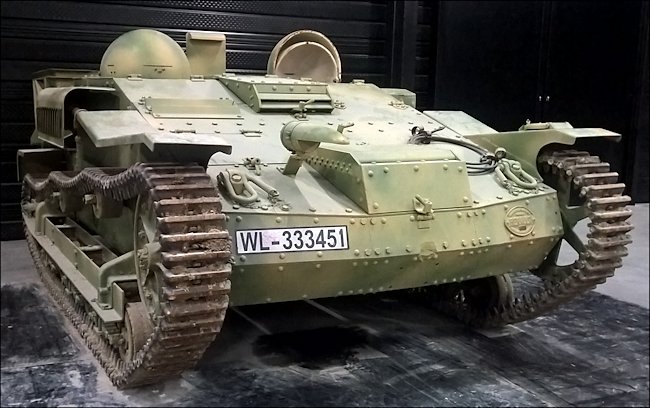
Renault UE Chenillette Tankette at the Centre Historique des Parachutistes du Jour-J
Location
In French the Museum is called Centre Historique des Parachutistes du Jour-J. It used to be called the Dead Man's Corner Museum and now it is the D-Day Paratroopers Historical Centre. The address is 2 Vierge de l'Amont, 50500 Saint-Come-du-Mont, France. Set your Sat-Nav for the village Saint-Come-du-Mont. The Museum is at the junction with Vierge de l'Amont (D913) and the Rue du Bel Esnault.
Specification
The Renault UE Tankette was powered by a Renault 85 engine that produced 38 hp. It had a top speed of 30 km/h (19 mph). It had an operational range of 100 km (62 miles) before needing refueling. The armour plating thickness was only 9mm which was just enough to protect the crew from small arms fire and artillery shell shrapnel. it had a two man crew. A few were armed with a 7.50 mm MAC machine gun. They were produced between 1932 and March 1941. A total of 5,168 were made.
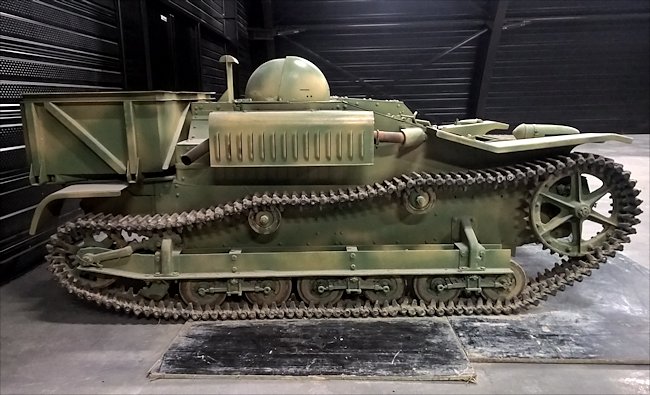
Renault UE Chenillette Tankette at the D-Day Paratroopers Historical Centre.
Deadman's Corner Paratrooper Museum
The Dead Man's Corner Paratrooper museum has been totally upgraded. It is dedicated to the US Airborne Divisions that dropped in the surrounding area on the Morning of D-Day 6th June 1944.
A large black hanger has been built that contains a paratrooper flight simulator experience. You go for a D-Day drop zone briefing before climbing on board a C47 Dakota and 'taking off' for Normandy from England. The old museum building is now a large WW2 replica military clothing, equipment and souvenir selling depot. For fans of TV series Band of Brothers, there is also a collection of genuine uniforms, letters and equipment from members of 'Easy' Company, including Richard Winters.
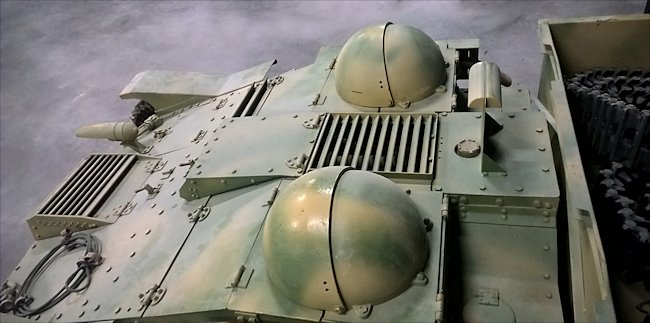
Renault UE Chenillette Tankette crew protective head domes.
Why is it called dead man's corner?
The building sits on an important five way crossroads that the Americans needed to capture after the nearby D-Day landings on 6th June 1944. At that time only one house stood at this location. The German paratroopers used it as a headquarters. On the 8th June the Americans reach the crossroads. They cam under heavy fire. A M5A1 Stuart Light tank was knocked out at the junction, outside the house which is now the Museum. by a hand held Panzefaust.
The tank commander Lt Walter T. Anderson died trying to get out of the tanks turret. He was left hanging out of the turret for number of days as the battle continued in the surrounding area. The rest of the crew died. The Germans held out for a number of days. The advancing troops were directed to go to Dead Man's Corner (the corner with the dead guy hanging out of the tank) instead of the five way crossroads of Saint-Come-du-Mont. It was easier to remember and identify.
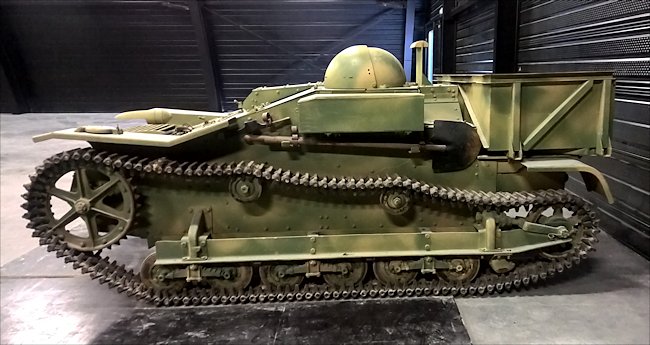
Renault UE Chenillette Tankette in the loft at the Dead Man's Corner Museum.
What was the Renault UE tankette used for?
The lightly armoured low profile Renault UE Chenillette Tankette was used as an armoured vehicle that could transport ammunitions, supplies and tow a cannon or large battlefield mortar whilst under fire. It was envisioned that soft skinned supply vehicles would meet the the Renault UE tankette crew a few miles behind the front line and transfer their load to the trailer of the Renault UE who would then take supplies or ammunition to the men at the front line.
After the invasion of France in 1940 the German Army converted a number of captured Renault UE tankettes. Some were armed with German MG 34 machine guns on external mounts, given stronger towing hooks so they could transport the German 50mm and 75mm anti-tank guns. Others had strong mounts added to their sides so they could become rocket Artillery vehicles.
Others were converted into command vehicles equipped with powerful radio sets. The 21st Panzer Division that was rushed to the Normandy Beaches was equipped with converted Renault UE command vehicles. They were called Kleiner Funk und Beobachtungspanzer auf Infanterie-Schlepper UE(f). The majority were used by the Germans for their original purpose of being an armoured transport vehicle.
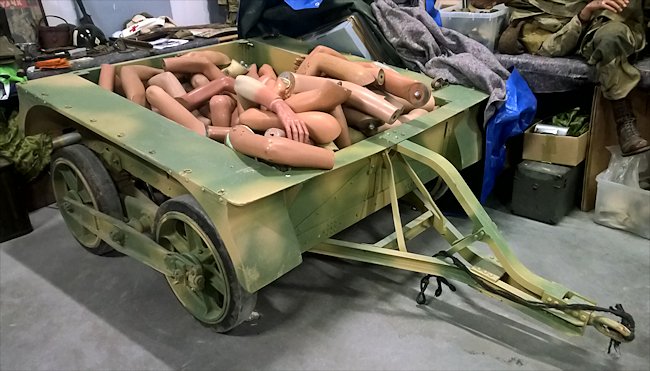
Renault UE Chenillette Tankette trailer without its tank tracks
D-Day 1944 books

